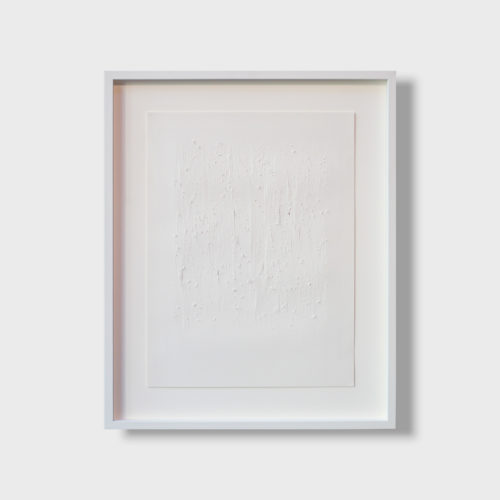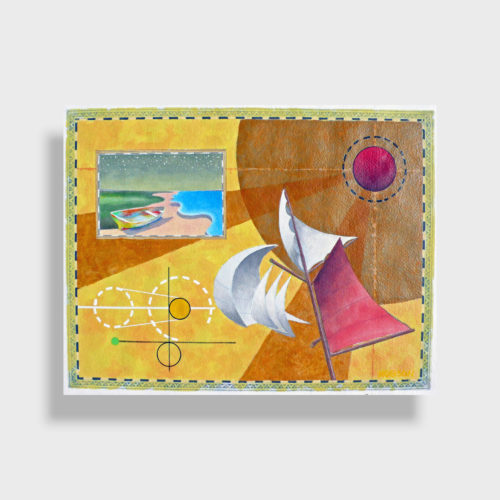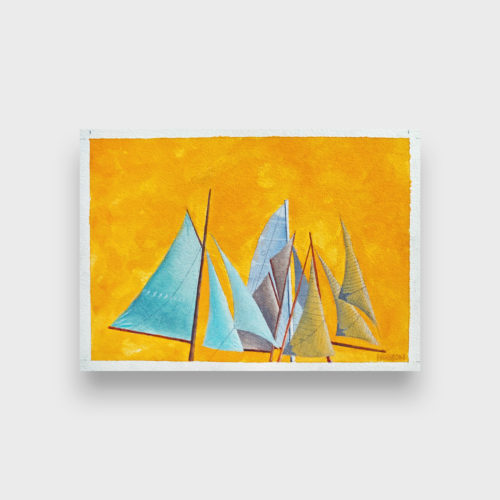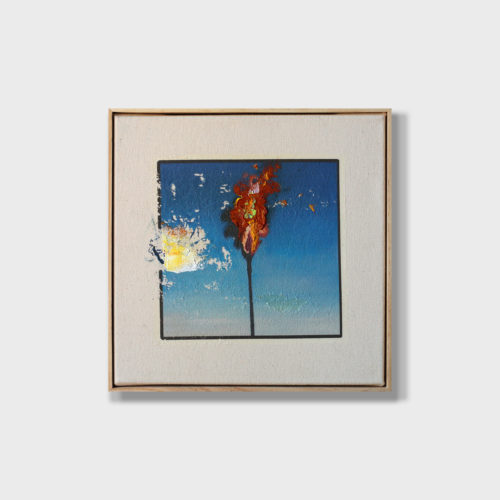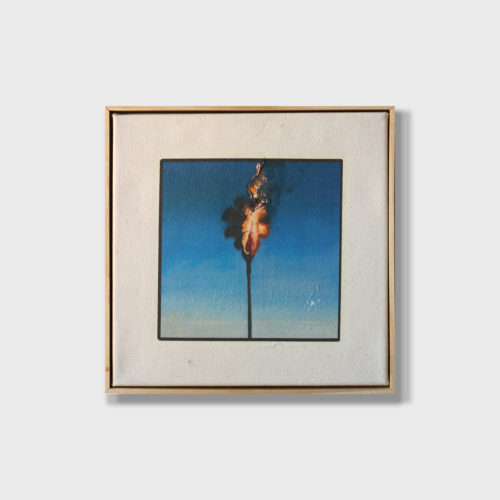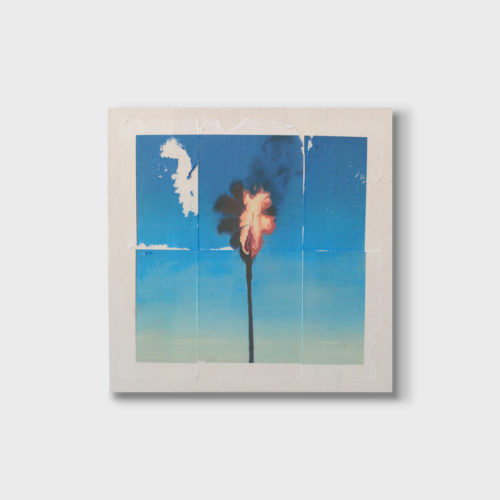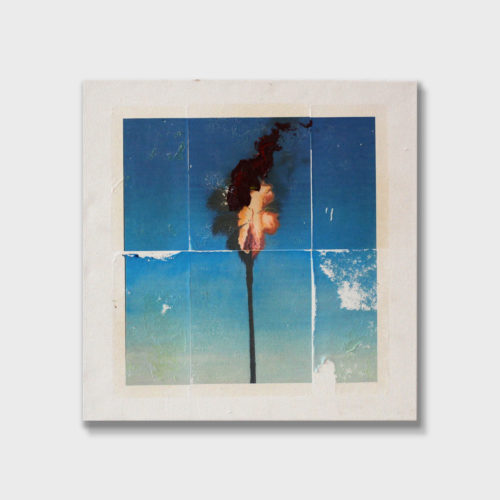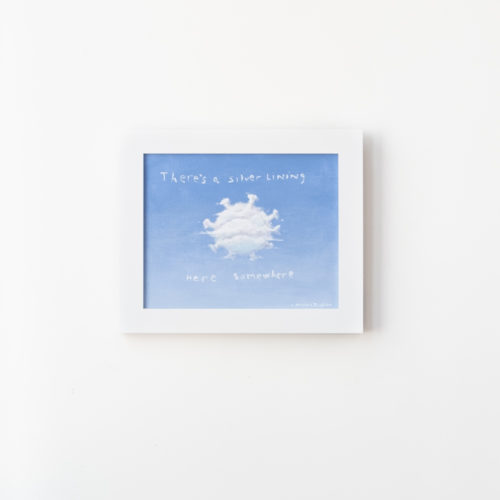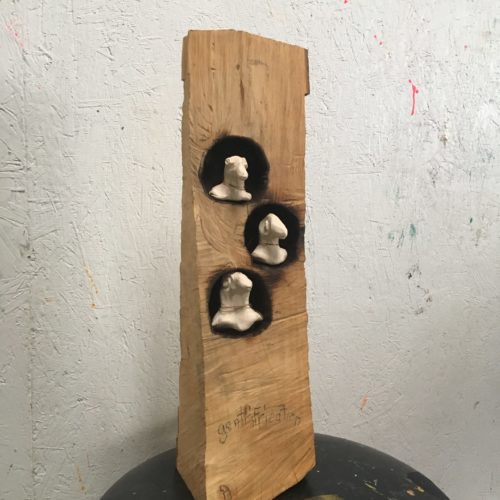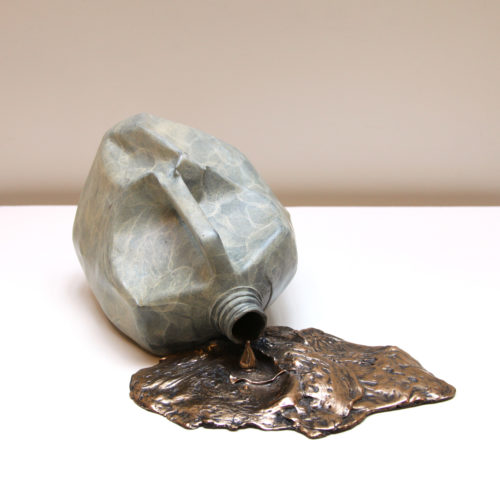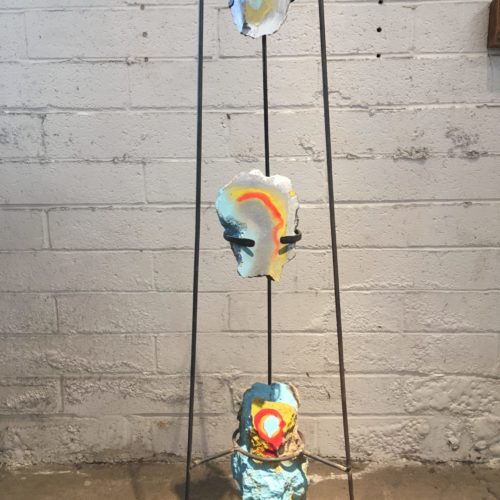Almost all works of art bring something into question. They ask the viewer to contemplate an idea, story, or representation of reality. However, conceptual art does something even more radical. It pulls the very nature of art itself into question.
This can be done in many different ways. A piece could parody an existing masterpiece and, in doing so, provide some commentary on it. A piece could also approach a very real concept in a way that twists it into an art form that ends up being surprising. The possibilities are endless.
The works of art in our catalog come in all different forms. Each conceptual piece delves deep into a concept or the artist’s innermost thoughts on a subject. Below are some of the conceptual art pieces featured in our gallery. These range from paintings and photography to sculptures and statues.
“Alphabet & Numerals”: The alphabet and ten basic numerals are enshrined into memory from the days of early schooling. However, a departure from the cursive writing system has changed how generations view these characters. This piece highlights the nature of cursive as an art form and chooses to do so in a way that is familiar to many.
“Home”: What does it mean to be home? Does it mean the physical structure? Does it mean settling into the comfort of a warm bed? Does it involve the area’s surroundings? This work packs all these features together and asks the viewer to consider them closely.
“Saturday Night’s Alright for Painting”: Many works by Perry Vásquez feature printed words on canvas. They challenge what art can be by focusing on elevating poetry to something visual. This particular work blends pop culture references, violence, and even a little humor. “Apocalypse”: Kathleen Mitchell’s “Apocalypse” is immediately haunting. The split, scattered, and childlike faces featured at the centerpiece of this work call to mind the dark impact of violence on society’s most vulnerable. Meanwhile, the radiation symbols ground the work in a grim reality.
FAQs
What Is the Value of Conceptual Art? Conceptual art is unique because, in most cases, the value doesn’t center around the finished piece of art. Instead, the value is centered around the overall idea or concept that is behind the art. The work conceptual artists generate helps challenge traditional forms of creative practice and goes on to ask audiences to rethink their perspective on what constitutes art.
Ultimately, the piece’s value is determined by the artist and the viewer. It’s up to the artist to place value on their conceptual piece. However, the viewer’s perception of a piece also influences it. Sometimes, these two factors align, as the artist and viewer share similar views on the piece. Other times, it does not, as the viewer may discover an entirely new interpretation of the work that the artist never had in mind. In any case, value is derived where these points meet.
Who Are Some of the Most Famous Conceptual Artists? An early example of a successful conceptual artist is Marcel Duchamp, who gained initial recognition and helped pave the way for the movement as a whole by thinking outside the box. Later on, prominent artists like Andy Warhol, Jean-Michel Basquiat, and Jackson Pollock presented their conceptual visions through their work.
What Are Some of the Most Famous Pieces of Conceptual Art? Marcel Duchamp’s “Fountain” helped define and popularize conceptual art, as its very presence was provocative. Meanwhile, Rene Margritte’s “The Treachery of Images” gets to the core of conceptual art by questioning the nature of art as a medium and what it means within the greater context of reality. John Baldessari’s “The Pencil Story” is another great example of famous conceptual art, as it approaches the concept of art through a more humorous lens.
Other well-known pieces include Damien Hirst’s “The Physical Impossibility of Death in the Mind of Someone Living,” Jeff Koons’ “Balloon Dog,” and Chris Burden’s “Shoot.”
Is It Possible for One Piece of Conceptual Art to Have Many Different Concepts All at Once? Most conceptual art is not designed with one singular idea in mind. In fact, conceptual art, by its very nature, has two philosophical ideas at the heart of it, the ideas it brings up about art and the wider ideas it brings up about its topic. However, many works of conceptual art are open for interpretation in a way that a near-infinite number of interpretations are valid. This means that, yes, one piece of conceptual art can have many different concepts present all at once.
Can Anything Be Conceptual Art? With the definition of conceptual art being somewhat vague and open to interpretation, it can feel difficult to classify conceptual art as something different from traditional approaches. However, there is a line that differentiates this form of art from others.
Thomas Demand’s “Kitchen” is a famous example of this. At first glance, the work appears to be a simple case of still-life photography. However, upon closer examination, it becomes clear that the photo’s subject is shockingly sterile and sanitized. Upon learning that the subject of the photo is a replica of part of the house where Saddam Hussein was found hiding, additional layers of commentary are elucidated and we can therefore classify this piece as conceptual art with a strong social commentary.

